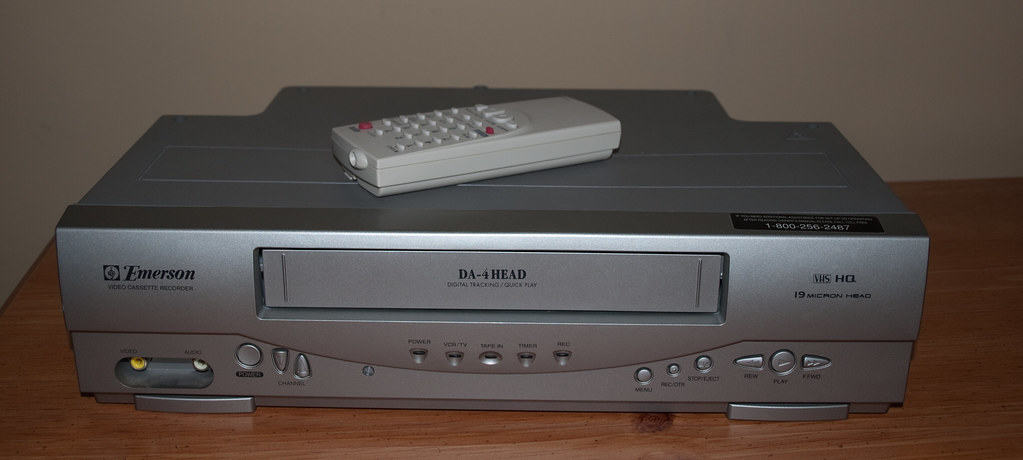Videocassette recorders, also known as VCRs, bring back feelings of nostalgia, taking us back to the era when VHS tapes were the main way to watch movies and record television shows. Even though digital media has taken over, many people still keep their VCRs to revisit special memories or watch classic film collections. However, when a VCR starts to malfunction, it can be challenging to fix it. This guide will take you through the basics of VCR repair, providing practical advice and simple steps that even beginners can follow.
VCR Troubleshooting Guide
| Problem | Possible Causes | Solutions |
|---|---|---|
| VCR won’t turn on | * Power cord issue * Blown fuse * Faulty power switch | * Check outlet and cords * Replace fuse if needed * Seek professional repair if switch is broken |
| Tape won’t load or eject | * Broken loading mechanism * Dirty tape path * Damaged tape | * Attempt gentle manual eject * Clean tape path thoroughly * Inspect tape for damage |
| Picture is snowy/distorted | * Dirty video heads * Damaged/worn tape * Misaligned tracking * Weak signal | * Clean video heads carefully with isopropyl alcohol & swabs * Try a different tape * Adjust tracking manually (consult manual) * Check antenna/cable connections |
| No sound or bad sound | * Dirty audio heads * Damaged tape * Audio settings * Speaker/cable issues | * Clean audio heads * Try a different tape * Check audio settings in VCR menu * Troubleshoot external speakers/cables |
| VCR eats the tape | * Worn pinch roller * Misaligned guides * Tangled tape inside VCR | * Replace pinch roller * Inspect tape path, realign guides if possible * Carefully remove tangled tape, professional repair may be needed |
Important Notes:
- Always unplug the VCR before cleaning or repairs.
- Refer to your VCR’s user manual for specific guidance.
- For complex issues, consult a professional technician.
Resources:
- Notes on the Troubleshooting and Repair of Video Cassette Recorders (https://www.repairfaq.org/sam/vcrfaq.htm)
- VCR Troubleshooting & Repair (Book) (https://www.amazon.com/VCR-Troubleshooting-Repair-Robert-Brenner/dp/075069940X)
If your VCR is no longer playing tapes correctly or has stopped working altogether, it could be due to a range of issues, such as dirty heads, mechanical wear, or electronic problems. Before you consider buying a replacement or seeking professional repair services, there are troubleshooting steps you can take at home. With a systematic approach, you can identify common VCR problems and implement basic maintenance tasks. Understanding how to clean, service, and lubricate your VCR will not only extend its life but can also save you time and money.

Key Takeaways
- This article offers a grounding in VCR mechanics and lays out a path for non-experts to approach repairs.
- It underscores the importance of troubleshooting and routine VCR maintenance as cost-effective solutions.
- Clear instructions are provided to empower readers to carry out repairs that can revive their beloved VCRs.
Getting Started With Your VCR Repair
Before attempting any repairs on a VCR, it’s crucial to correctly diagnose the problem and ensure you have the right tools on hand.
Assessing the Issue
Begin by visually inspecting your VCR for any obvious signs of damage. Check if dust and debris are clogging the device which can often cause problems. Try inserting a VHS tape and watch for any irregularities in the way the machine loads, plays, and ejects the tape. Listen for unusual noises that could indicate internal issues. If the picture is snowy or unstable, the video heads may need cleaning.
Gathering Necessary Tools
To get started on the repairs, you’ll need a few basic tools:
- Screwdrivers: A set of screwdrivers, including Phillips and flat-head, is essential for opening the VCR housing.
- Pliers: Needle-nose pliers can be handy for manipulating small internal parts.
- Cleaning Supplies:
- Compressed Air: Use this to blow out dust from inside the VCR.
- Head-Cleaning Materials: You will need foam swabs and denatured alcohol to clean the video heads gently.
- Lubricating Grease: Apply this to any moving parts if they seem stiff or squeaky.
Ensure that your workspace is neat, well-lit, and free of static electricity to avoid damaging the electronic components of the VCR.
Step-By-Step VCR Maintenance and Repair
Regular maintenance and proper repair can keep a VCR in good working condition. This section will guide you through cleaning, inspecting, and repairing the essential components of your VCR.
Cleaning and Dust Removal
The first step is to prevent dust buildup inside your VCR. Dust can cause various issues, from poor video quality to mechanical failure. Use a soft, dry cloth to wipe the exterior. For interior cleaning, gently use compressed air to remove dust from the circuit board and a cotton swab dipped in isopropyl alcohol to clean the video heads.
Internal Mechanism Check
After removing dust and debris, inspect the internal parts for any signs of wear. Look at the gears and check if the reel assembly moves smoothly. The idler wheel should rotate without resistance. If you spot any damaged parts, they may need replacement.
Belt and Roller Adjustments
Worn belts or rollers can cause the videotape to move incorrectly, leading to playback issues. Inspect belts for signs of wear, such as cracking or stretching. If necessary, replace them. Adjust the pinch rollers too; they should press firmly against the capstan without being too tight.
Tape Drive and Capstan Repair
Finally, inspect the tape drive system. A malfunctioning drive system can result in a VCR that won’t play tapes. The capstan and pinch rollers work together to pull the videotape smoothly across the video heads. If the capstan shaft is dirty, clean it with isopropyl alcohol. Check for any wear on the capstan shaft washer and replace it if needed.
By following these steps, you can ensure your VCR operates smoothly. Regular maintenance such as cleaning and checking internal mechanisms, along with timely adjustments and repairs of the belts, rollers, and capstan, can significantly extend the life of your device.
Frequently Asked Questions
What steps are involved in repairing a VCR that won’t play tapes?
To address a VCR that won’t play tapes, first check the power cord and ensure it is firmly plugged into a working outlet. Next, inspect the condition of the tape and the cleanliness of the VCR heads. Clean the heads if they are dirty. Also, make sure the tape is properly inserted and that the VCR’s settings are correctly configured for playback.
How can I troubleshoot a VCR that does not power on?
If a VCR doesn’t power on, first ensure that the power cord is intact and connected to a functional outlet. Press the reset button if one is available. If the device still does not turn on, inspect the power button for damage, and check for any blown fuses inside the VCR.
What are some common issues with VCRs that can be repaired at home?
Common VCR issues that may be fixed at home include unresponsive buttons, dirty playback heads, and problems with tape loading or ejection. Regular cleaning, careful handling of tapes, and the correct storage of the device can often prevent or resolve these issues.
What should I check for when a VCR is not functioning properly?
Checking a non-functioning VCR involves ensuring all cables are securely connected and free of damage. Examine the VCR for any physical damage. Look at the connections to the TV and other devices to confirm they’re on the correct settings. Review the user’s manual for troubleshooting tips specific to the model.
When should a professional be consulted for VCR repair?
Consult a professional if the VCR has severe mechanical problems, electrical issues beyond a simple fuse replacement, or if you have attempted basic troubleshooting steps with no success. Professionals should also be sought for internal component repairs or when specialized tools are required.
How does one properly maintain a VCR to avoid future playback issues?
Proper VCR maintenance includes regular cleaning of the playback heads and other components according to the manufacturer’s instructions. Keep the VCR away from dust and moisture. Store tapes properly and avoid overusing or straining the device with excessive rewinding and fast-forwarding.







